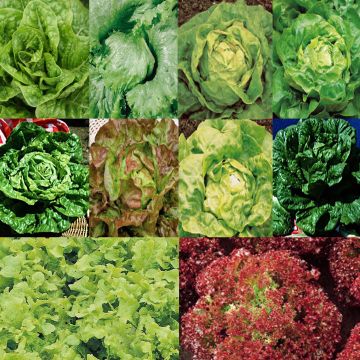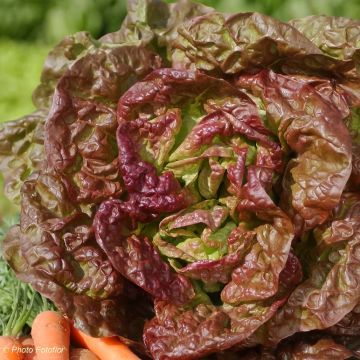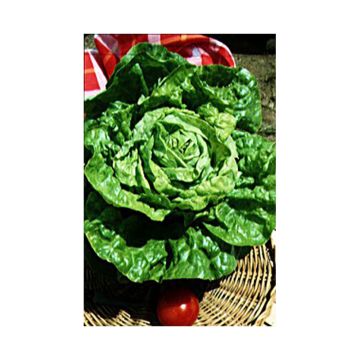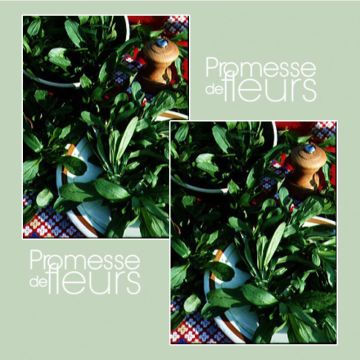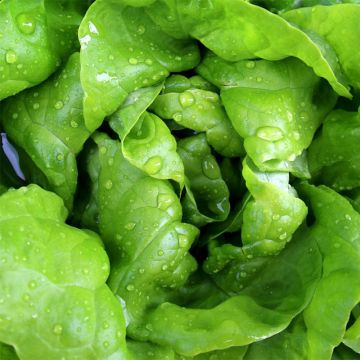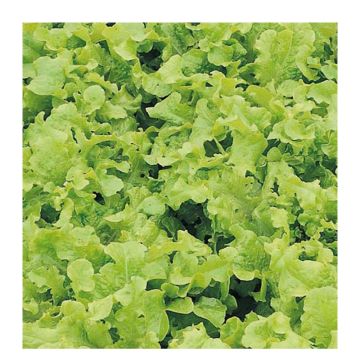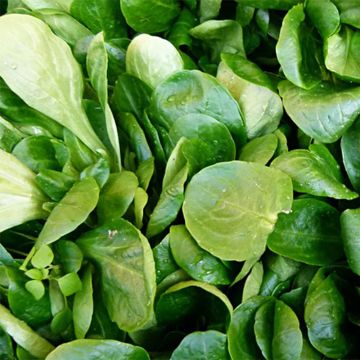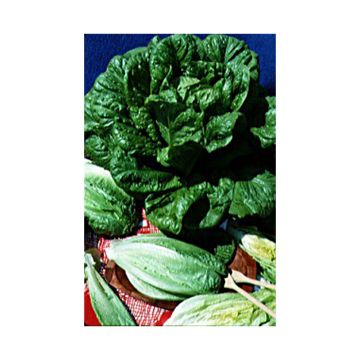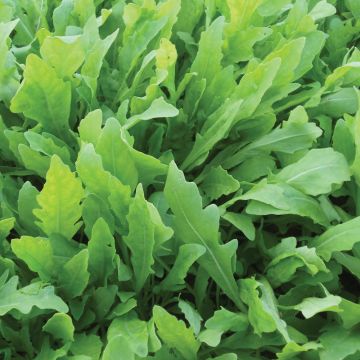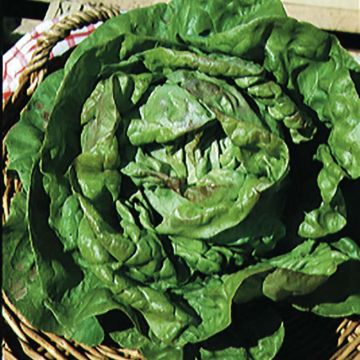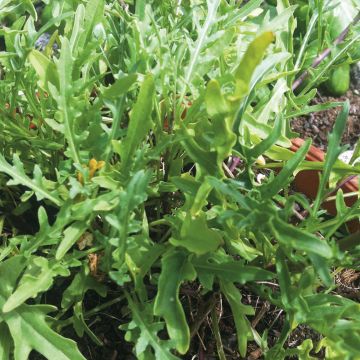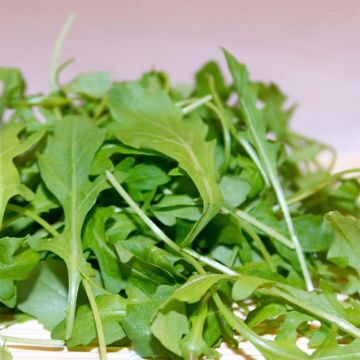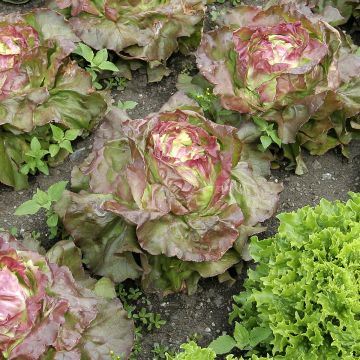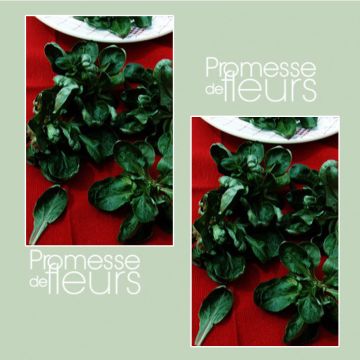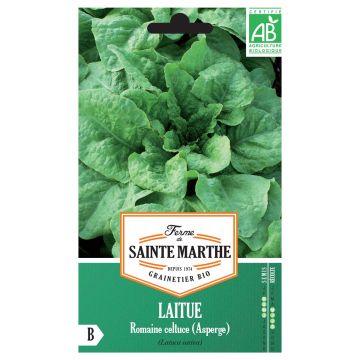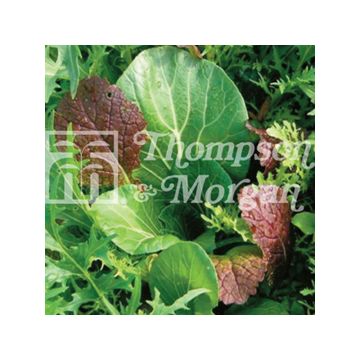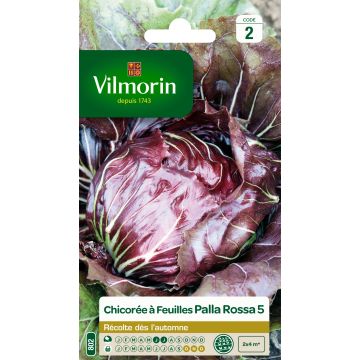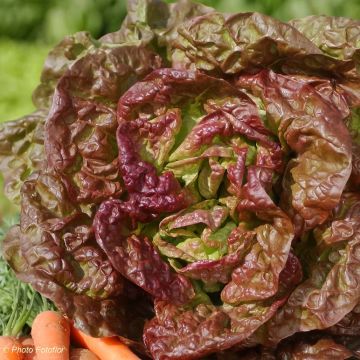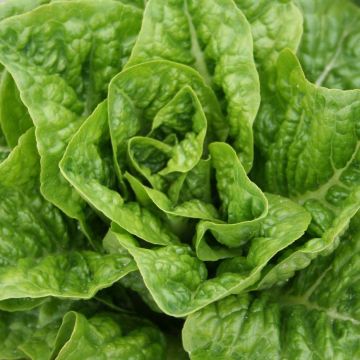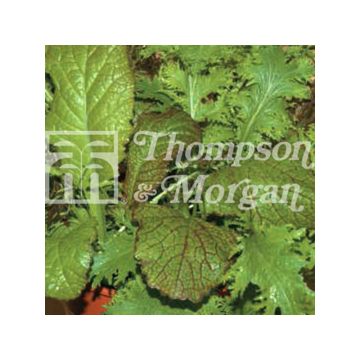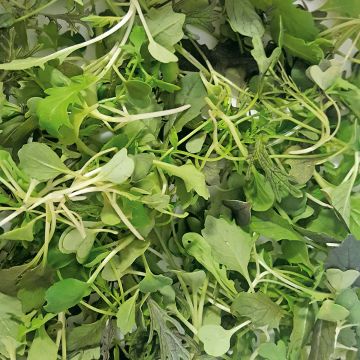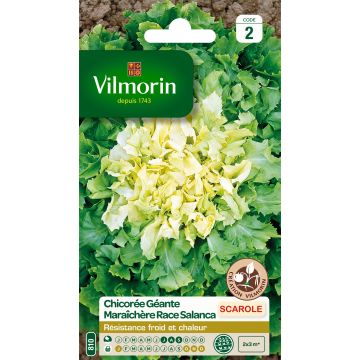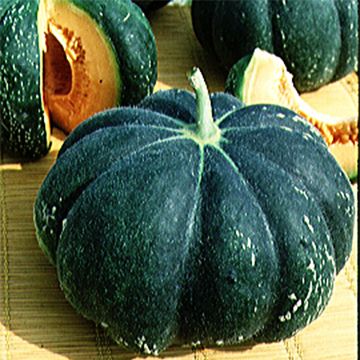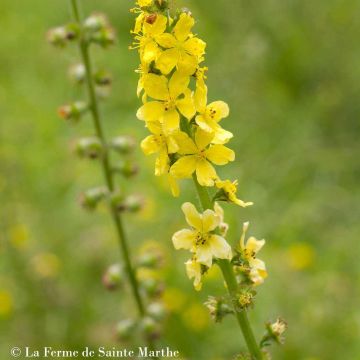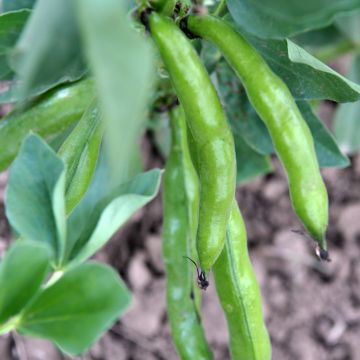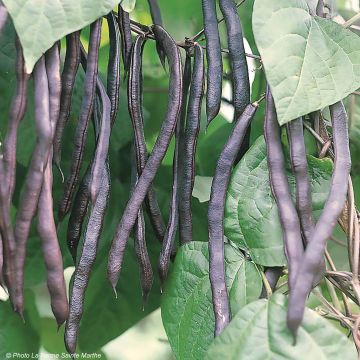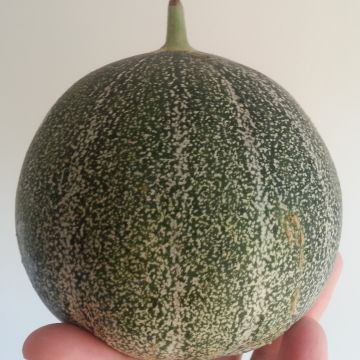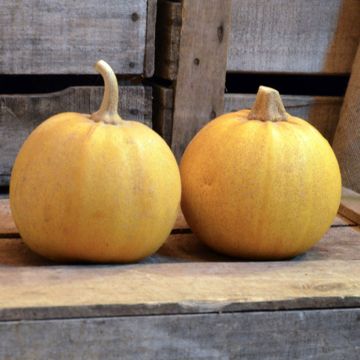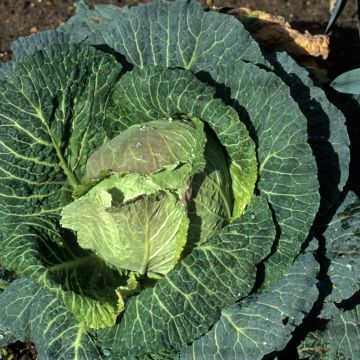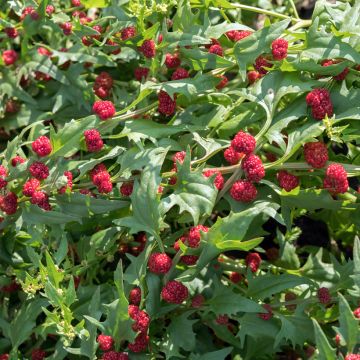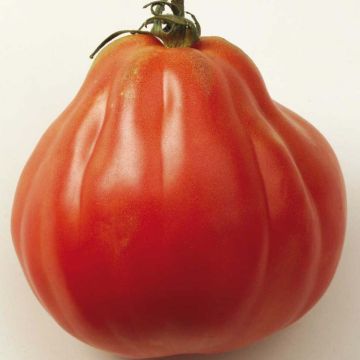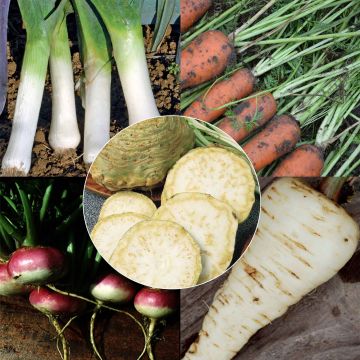Shipping country and language
Your country of residence may be:
Your country of residence is:
For a better user experience on our website, you can select:
Your shipping country:
Andorra
Austria
Belgium
Bulgaria
Canada
Chile
Croatia
Cyprus
Czechia
Denmark
Estonia
Finland
France
Germany
Greece
Hungary
Iceland
Ireland
Italy
Latvia
Lithuania
Luxembourg
Malta
Monaco
Netherlands
Poland
Portugal
Romania
Slovakia
Slovenia
Spain
Sweden
Switzerland
United Kingdom
We only deliver seed and bulb products to your country. If you add other products to your basket, they cannot be shipped.
Language:
French
German
Spanish
English
My Account
Hello
My wish lists
Plantfit
Log in / Register
Existing customer?
New customer?
Create an account to track your orders, access our customer service and, if you wish, make the most of our upcoming offers.
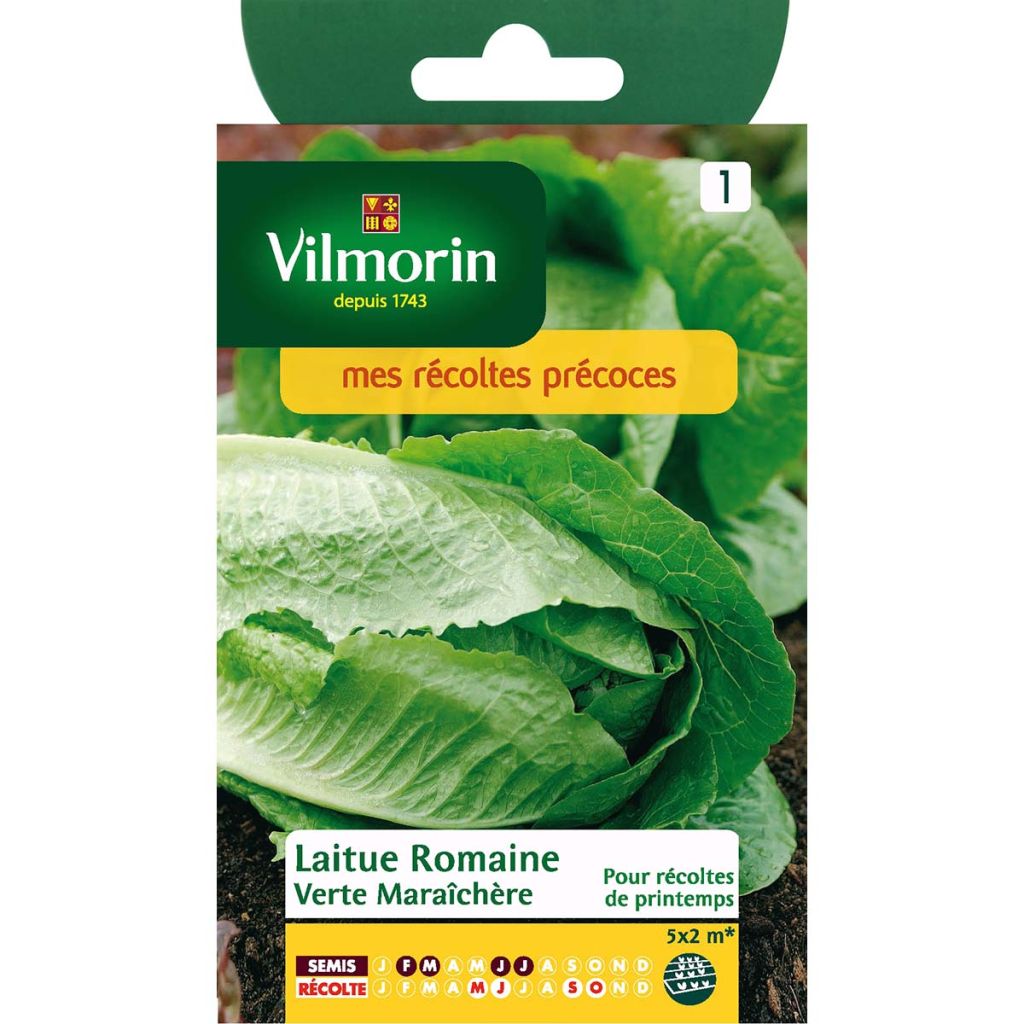

Cos Lettuce Verte Maraichère - Vilmorin seeds - Lactuca sativa
Cos Lettuce Verte Maraichère - Vilmorin seeds - Lactuca sativa
Lactuca sativa Verte maraîchère
Lettuce
Very well! No comment.
hellen K., 08/10/2017
Why not try an alternative variety in stock?
View all →Order in the next for dispatch today!
Dispatch by letter from €3.90.
Delivery charge from €5.90 Oversize package delivery charge from €6.90.
More information
This item is not available in your country.
Schedule delivery date,
and select date in basket
This plant carries a 6 months recovery warranty
More information
We guarantee the quality of our plants for a full growing cycle, and will replace at our expense any plant that fails to recover under normal climatic and planting conditions.
Seed-only orders are dispatched by sealed envelope. The delivery charge for seed-only orders is €3.90.


Description
Lettuce 'Verte Maraichere' is a very early season cos type variety with elongated heads of thick, crunchy green leaves. It is ideal for spring and autumn crops. Sow the seeds from February to March, then again from June to July. Harvest from May to June, and again from September to October.
Lettuce is one of the most popular vegetables (with a consumption of 4.2 kilograms per person per year). It is equally appreciated for its freshness, crispness, its taste, and nutritional qualities. It can be consumed raw in salads, but also cooked, to accompany peas, for example.
As the ultimate leafy vegetable, lettuce is an annual plant belonging to the large Asteraceae family. Its Latin name, Lactuca sativa, refers both to the white sap (lactuca) that oozes when it is cut and to the fact that it is cultivated (sativa).
It is an important part of any respectable vegetable garden, and there are so many varieties that it can be cultivated almost all year round. Lettuce cultivation is easy as long as the cultivation calendar for each variety is respected. Its growth is fast, and it thrives in any soil that is rich and remains moist.
Harvest: cut with a knife when it reaches maturity.
Storage: lettuce can be stored for a few days in the refrigerator, but to fully enjoy its freshness, we recommend consuming it immediately after harvesting.
Gardener's tip: during hot summer weather, lettuces exposed to direct sunlight tend to wilt. To prevent this, consider protecting them from intense rays by using overturned crates. Instead of growing summer lettuces in rows, consider growing them at the base of climbing beans, or amidst cucumbers and squashes, whose foliage provides beneficial shade.
Harvest
Plant habit
Foliage
Botanical data
Lactuca
sativa
Verte maraîchère
Asteraceae
Lettuce
Cultivar or hybrid
Annual
Other Salad leaf seeds
Planting and care
Sowing
Loose leaf lettuce germinates at a temperature of about 18°C (64.4°F) and usually takes around 10 days.
Sow under cover (cold frame) from February to April, or directly outdoors from March to July.
In loose, well-prepared soil, sow the seeds in rows, 4cm (2in) apart, 0.5cm deep and cover with soil. Leave about 15cm (6in) between each row. When the seedlings are strong enough, thin them out by keeping one strong plant every 15cm (6in).
If slugs and snails are a problem in your vegetable garden, sowing under cover in small pots may be the best option. The plants can be moved to their final position when they are big enough.
Where to grow
Lettuce is not a very greedy vegetable, but it does require humus-rich soil or else it tends to bolt (go to seed) fairly quickly. Prevent this by raking a bit of well-rotted compost into the top 5cm (2in) of a prepared seed bed in autumn. Lettuce does well in slightly acidic to neutral soils (PH between 5.5 and 7.5) that are kept moist. Water regularly.
Lettuce can be grown alongside other slow-growing vegetables such as beans, tomatoes, and cucumbers etc. Avoid growing lettuce next to maize plants.
Seedlings
Care
Intended location
- , onOrder confirmed
Reply from on Promesse de fleurs
Vegetable seeds
Haven't found what you were looking for?
Hardiness is the lowest winter temperature a plant can endure without suffering serious damage or even dying. However, hardiness is affected by location (a sheltered area, such as a patio), protection (winter cover) and soil type (hardiness is improved by well-drained soil).

Photo Sharing Terms & Conditions
In order to encourage gardeners to interact and share their experiences, Promesse de fleurs offers various media enabling content to be uploaded onto its Site - in particular via the ‘Photo sharing’ module.
The User agrees to refrain from:
- Posting any content that is illegal, prejudicial, insulting, racist, inciteful to hatred, revisionist, contrary to public decency, that infringes on privacy or on the privacy rights of third parties, in particular the publicity rights of persons and goods, intellectual property rights, or the right to privacy.
- Submitting content on behalf of a third party;
- Impersonate the identity of a third party and/or publish any personal information about a third party;
In general, the User undertakes to refrain from any unethical behaviour.
All Content (in particular text, comments, files, images, photos, videos, creative works, etc.), which may be subject to property or intellectual property rights, image or other private rights, shall remain the property of the User, subject to the limited rights granted by the terms of the licence granted by Promesse de fleurs as stated below. Users are at liberty to publish or not to publish such Content on the Site, notably via the ‘Photo Sharing’ facility, and accept that this Content shall be made public and freely accessible, notably on the Internet.
Users further acknowledge, undertake to have ,and guarantee that they hold all necessary rights and permissions to publish such material on the Site, in particular with regard to the legislation in force pertaining to any privacy, property, intellectual property, image, or contractual rights, or rights of any other nature. By publishing such Content on the Site, Users acknowledge accepting full liability as publishers of the Content within the meaning of the law, and grant Promesse de fleurs, free of charge, an inclusive, worldwide licence for the said Content for the entire duration of its publication, including all reproduction, representation, up/downloading, displaying, performing, transmission, and storage rights.
Users also grant permission for their name to be linked to the Content and accept that this link may not always be made available.
By engaging in posting material, Users consent to their Content becoming automatically accessible on the Internet, in particular on other sites and/or blogs and/or web pages of the Promesse de fleurs site, including in particular social pages and the Promesse de fleurs catalogue.
Users may secure the removal of entrusted content free of charge by issuing a simple request via our contact form.
The flowering period indicated on our website applies to countries and regions located in USDA zone 8 (France, the United Kingdom, Ireland, the Netherlands, etc.)
It will vary according to where you live:
- In zones 9 to 10 (Italy, Spain, Greece, etc.), flowering will occur about 2 to 4 weeks earlier.
- In zones 6 to 7 (Germany, Poland, Slovenia, and lower mountainous regions), flowering will be delayed by 2 to 3 weeks.
- In zone 5 (Central Europe, Scandinavia), blooming will be delayed by 3 to 5 weeks.
In temperate climates, pruning of spring-flowering shrubs (forsythia, spireas, etc.) should be done just after flowering.
Pruning of summer-flowering shrubs (Indian Lilac, Perovskia, etc.) can be done in winter or spring.
In cold regions as well as with frost-sensitive plants, avoid pruning too early when severe frosts may still occur.
The planting period indicated on our website applies to countries and regions located in USDA zone 8 (France, United Kingdom, Ireland, Netherlands).
It will vary according to where you live:
- In Mediterranean zones (Marseille, Madrid, Milan, etc.), autumn and winter are the best planting periods.
- In continental zones (Strasbourg, Munich, Vienna, etc.), delay planting by 2 to 3 weeks in spring and bring it forward by 2 to 4 weeks in autumn.
- In mountainous regions (the Alps, Pyrenees, Carpathians, etc.), it is best to plant in late spring (May-June) or late summer (August-September).
The harvesting period indicated on our website applies to countries and regions in USDA zone 8 (France, England, Ireland, the Netherlands).
In colder areas (Scandinavia, Poland, Austria...) fruit and vegetable harvests are likely to be delayed by 3-4 weeks.
In warmer areas (Italy, Spain, Greece, etc.), harvesting will probably take place earlier, depending on weather conditions.
The sowing periods indicated on our website apply to countries and regions within USDA Zone 8 (France, UK, Ireland, Netherlands).
In colder areas (Scandinavia, Poland, Austria...), delay any outdoor sowing by 3-4 weeks, or sow under glass.
In warmer climes (Italy, Spain, Greece, etc.), bring outdoor sowing forward by a few weeks.
